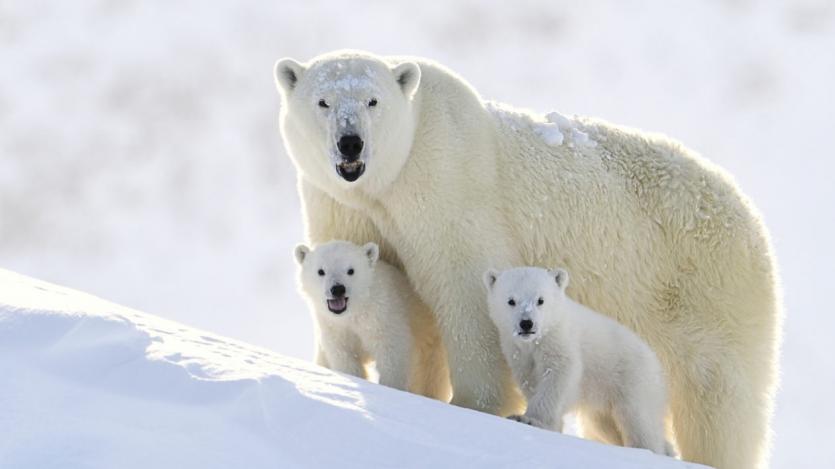A polar bear family near Baffin Island in the Canadian arctic.
By Patryk Krych | The World Daily | APRIL 7th 2021
Due to the shrinking of their natural hunting grounds, polar bears in the Arctic have recently begun resorting to foraging for eggs. A study published on Wednesday has, however, revealed the species’ struggle to adapt to such new hunting methods.
Climate change has proven to be one of the most pressing threats of the generation time and time again. Among its most devastating observed effects is the melting of the Arctic polar bears hunting grounds, leading to the species gradual migration in a southwards direction. A migration that the bears may not survive, as they’re forced to forage for food in ways through which they haven’t been adapted to.
The study, published on Wednesday in the journal Royal Society Open Science, focused on observing the bears behaviours upon approaching bird nesting sites over the course of 11 days, and monitoring the depletion of the eggs.
Patrick Jagielski of the Great Lakes Institute for Environmental Research at the University of Windsor, and lead author of the study, said: “We found that later-arriving bears increasingly visited more empty nests and did not travel in an energy-minimizing way, but became less picky in the clutches they consumed.”
Polar bears are typically well-evolved for hunting seals, being the best hunters for such prey. The track down the seals by their smell and wait by their breathing holes in the ice for the seals to resurface. With the sea ice melting away, this method of hunting is becoming decreasingly valid for the polar bears. As they, they are forced to look for new food sources and hunting methods.
Their poor adjustment to egg hunting was observed throughout the study, with consistent examples of wandering polar bears not putting it together that the sight of a fleeing eider hen was an indication that there were eggs somewhere nearby.
“This study demonstrates that, while species are able to incorporate 'less preferred' resources into their diet when their primary prey becomes more difficult to obtain, they may not be able to do so efficiently,” said the study authors.
It’s been noted that there are only around 25,000 of the species left, struggling for their lives as they try to adapt throughout the Arctic in Alaska, Greenland, Russia, Canada, and Norway. Another study published in July of 2020 had predicted that the polar bear species may go entirely extinct by the year 2100.






